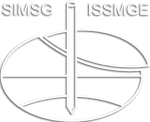A unified Bio-Chemo-Hydro-Mechanical formulation for soil improvement with microbially-induced calcite precipitation
A unified Bio-Chemo-Hydro-Mechanical formulation for soil improvement with microbially-induced calcite precipitation
This paper reports recent advances in modelling MICP at the engineering scale, in particular with respect to the stress-strain-strength modelling of bio-cemented soils. A complete Bio-Chemo-Hydro-Mechanical (BCHM) model is presented. The BCH model is based on the advection-dispersion-reaction equation modified to incorporate the behaviour of bacteria. Mechanisms such as bacteria attachment, reaction rate and calcite precipitation are considered. Calcite precipitation leads to a decrease in porosity and permeability which, in turn, modifies flow and transport of reactive species. A new constitutive model has been developed to reproduce the increase in strength and stiffness of bio-cemented sands. The main novelty with respect to previous studies is the unification of the bio-chemo-hydraulic equations with a constitutive model that reproduces the stress-strain-strength response of biocemented sands. In a boundary value problem, the inclusion of such constitutive model reveals the development of plastic strains at the interface between the cemented and non-cemented areas, as a consequence of the heterogeneous strength after treatment. The potential of the model for its use in geotechnical applications is demonstrated with a synthetic case of a shallow foundation.
J. Bosch; Dimitrios Terzis; Lyesse Laloui
9th International Congress on Environmental Geotechnics (ICEG2023)
Biogeotechnics and Bioremediation
Biogeotechnical Engineering, Ground Improvement, Geoenvironmental Engineering
https://doi.org/10.53243/ICEG2023-440
